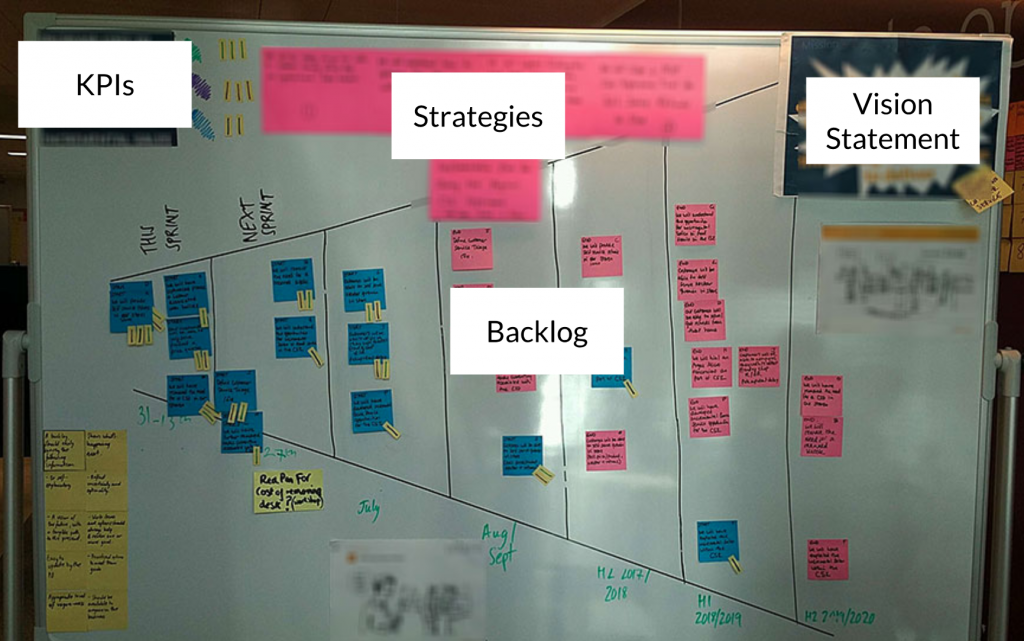Here’s an approach I’ve found successful when helping teams ensure their backlog supports optionality, handles uncertainty and continuously adjusts so their goals and strategies are aligned to their vision.
A backlog should have these qualities
The backlog is made-up of backlog items. Each item represents a business goal, which when delivered by the team, will provide a beneficial outcome to the business and its customers/stakeholders.
Qualities of the backlog:
- Easy to update by the product owner
- Should be available to everyone in the business
- Shows the backlog items for the next sprint
- Conveys a vision of the future with a tangible path to the present
- Reflects vagueness and options
- If a distant backlog item is too vague to describe in words, consider drawing a picture, as shown in the photo below
- Self-explanatory to anyone in the business
The cone-shaped
I often encourage teams to visualise the backlog in a cone-shape in this manner:
- The neck of the cone shows the current sprint goals
- The widest point of the cone shows the furthest goals which may be months or years from now.
- The centre of the cone shows the goals for the intervening time periods. This area can be divided into sprints, months, quarters and half-year intervals.

Reason for the cone-shape
- It reflects the cone of uncertainty, where the further out the team considers, the less certain they are of the future environment.
- The narrow neck of the cone reflects the fact the team can only sustainably deliver a small number of goals. Invariably there is more demand than the team can supply, so the team should gradually constrain the number of goals as the time nears the current sprint.
- The further into the future, the more the team can consider a wide number of options. This optionality allows the team to consider many possibilities and scenarios without having to commit earlier than necessary. However, as time draws nearer, and as the cone gets narrower, the team will need to reduce the number of options based on the insights they have gathered.
Additional information which supports the backlog
As shown in the photo above, to enable continuous alignment across the business, there is additional information I advise teams to use:
- Vision Statement: This is a short easy-to-understand statement which describes what the team intends to achieve. It’s written by the team, with their sponsor and stakeholders. The vision statement ensures alignment for the team with those they serve and with those whom the team may rely upon.
- Strategies: These are the current set of approaches the team have reasonable confidence in that, if delivered successfully, will help fulfil the vision statement.
- KPIs: These Key Performance Indicators are a small selection of measures which indicate whether the team’s strategies and sprint goals are achieving the team’s vision.
- Epics start and end dates: Epics are goals which span more than one sprint. On the backlog, the likely start time of an epic is positioned with a blue post-it note; the likely end time is positioned with a pink post-it note.
Further Reading
- Envisioning workshop: Mission, Values, Vision and Strategies – A workshop approach to kick-start (or restart) the relationship between a team on their leaders to gain strategic alignment and deliver value.
